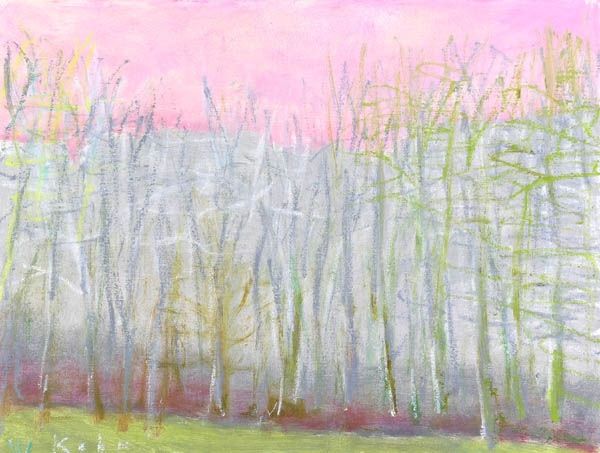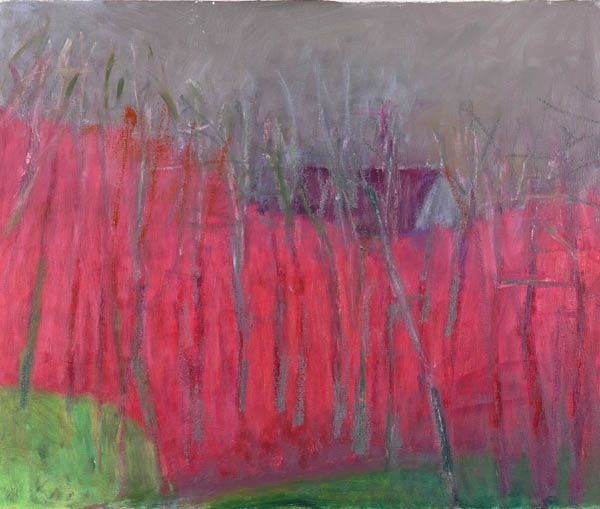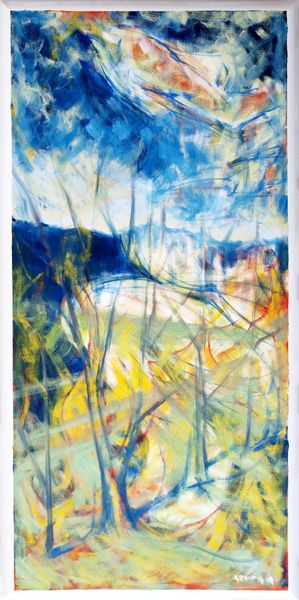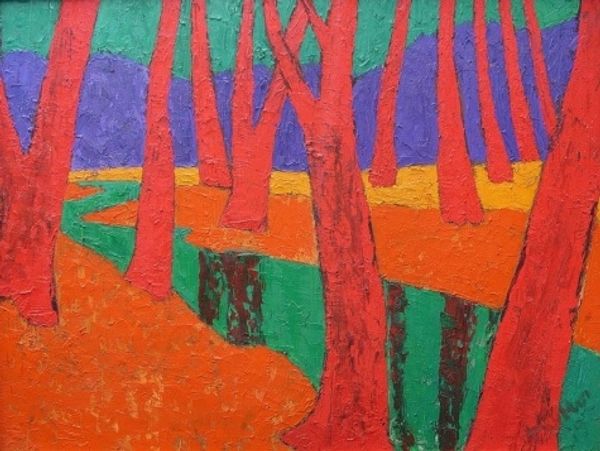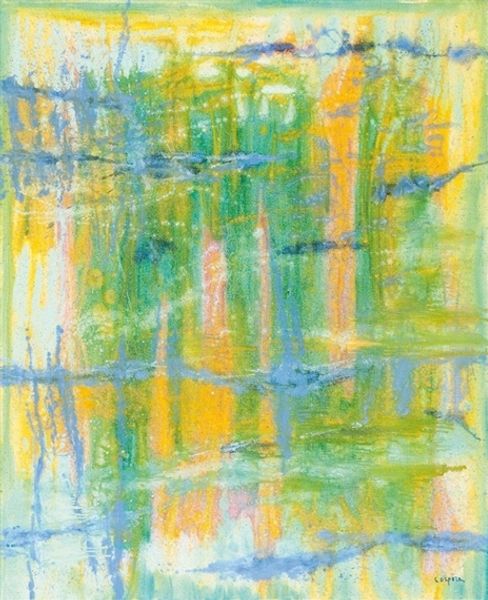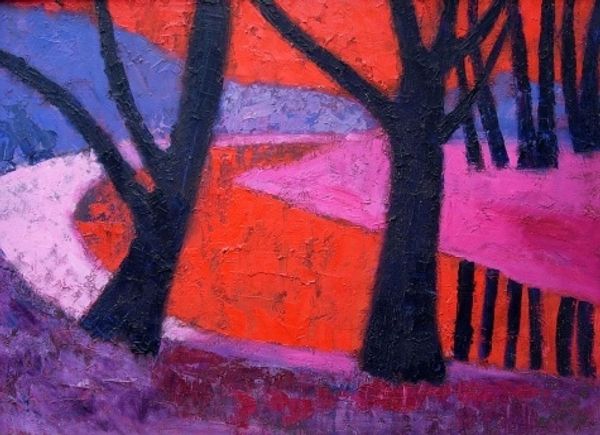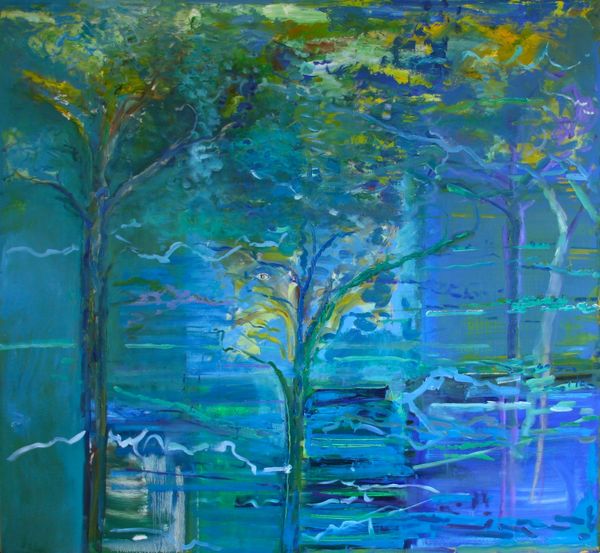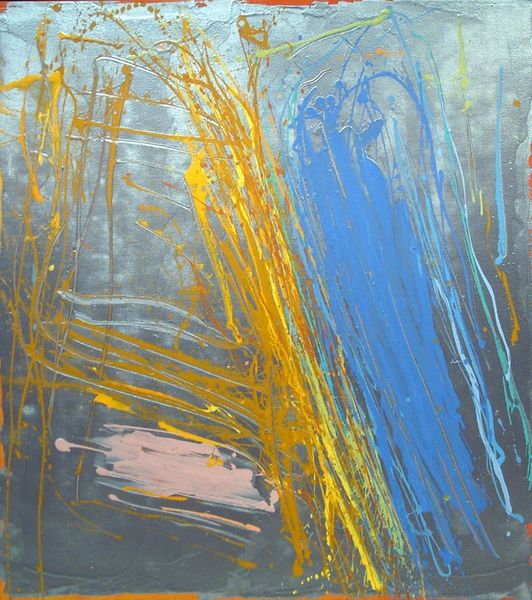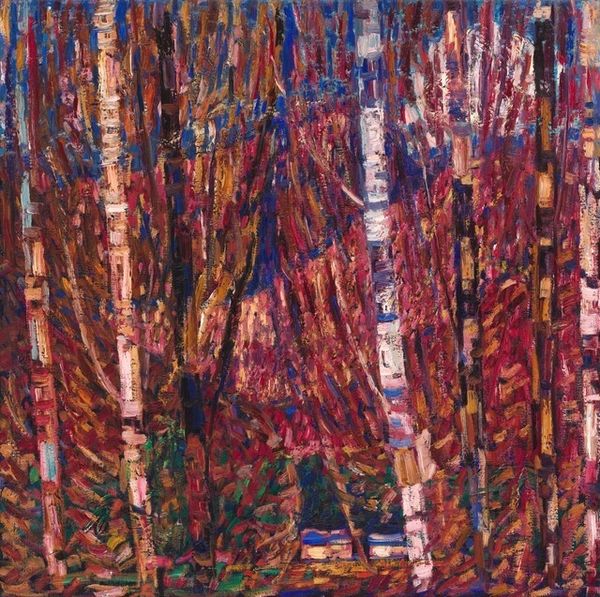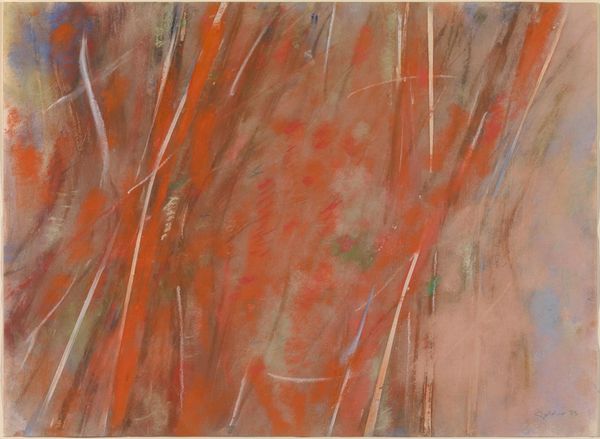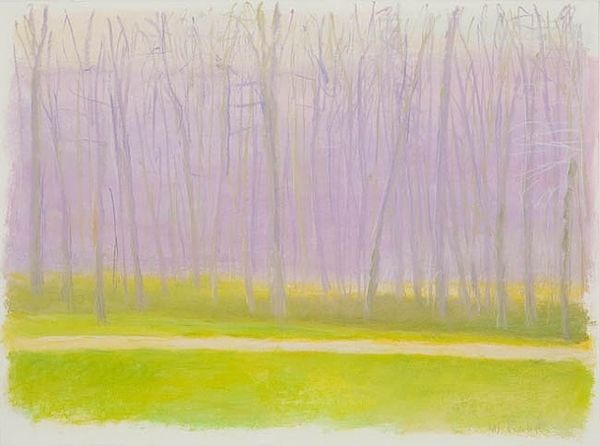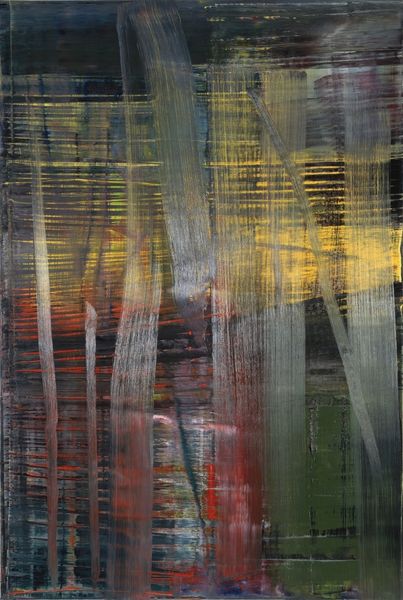
Copyright: Wolf Kahn,Fair Use
Curator: Today, we’re looking at “Dark Band,” an oil on canvas created by Wolf Kahn in 2008. Editor: My first thought is that there is something quite stark and ethereal here. The thin vertical strokes give a sense of confinement almost like peering through the bars of a cage into washes of color beyond. Curator: That feeling of confinement speaks, I think, to Kahn’s engagement with the legacy of Abstract Expressionism but viewed through a distinctly Post-Impressionist lens, where traditional landscape is deconstructed. How do you see the impact of that layering reflected in Kahn’s broader perspective of place and identity? Editor: For me, the material density in this painting, particularly the oil paint's build-up in the ‘dark band’ itself, speaks to its title. The opacity and layering is important; consider the physicality of applying paint and how this band becomes a grounding element to the atmospheric color field behind it. Curator: Absolutely. Kahn was a German-born American painter, part of the second generation of Abstract Expressionists. His paintings explored the tensions between color, form, and perception and he drew on a profound sense of place, specifically his experiences in rural Vermont, filtered through the theories of color interaction he studied with Hans Hofmann. Editor: The method becomes the meaning; those deliberate color choices directly communicate to the viewer and transform the landscape tradition through process. You get a very clear understanding of place, the feel of a landscape built directly by its application. Curator: What's particularly striking here is Kahn’s manipulation of color, that striking contrast between the yellow and muted green in the lower register, that bold orange sky, creating a kind of emotional and psychological terrain. These color choices serve as active participants in creating the viewer's subjective interpretation. Editor: Ultimately, the process, the 'how' of this painting gives rise to these emotional textures which transform our understanding, not just of place, but the act of looking itself. Curator: Looking at this work provides us an opportunity to really reconsider art history through contemporary viewpoints, asking ourselves what stories, histories, and perspectives can be unveiled? Editor: I would concur: looking deeply at this, it is a piece that emphasizes the art and experience created by simple material engagement.
Comments
No comments
Be the first to comment and join the conversation on the ultimate creative platform.
